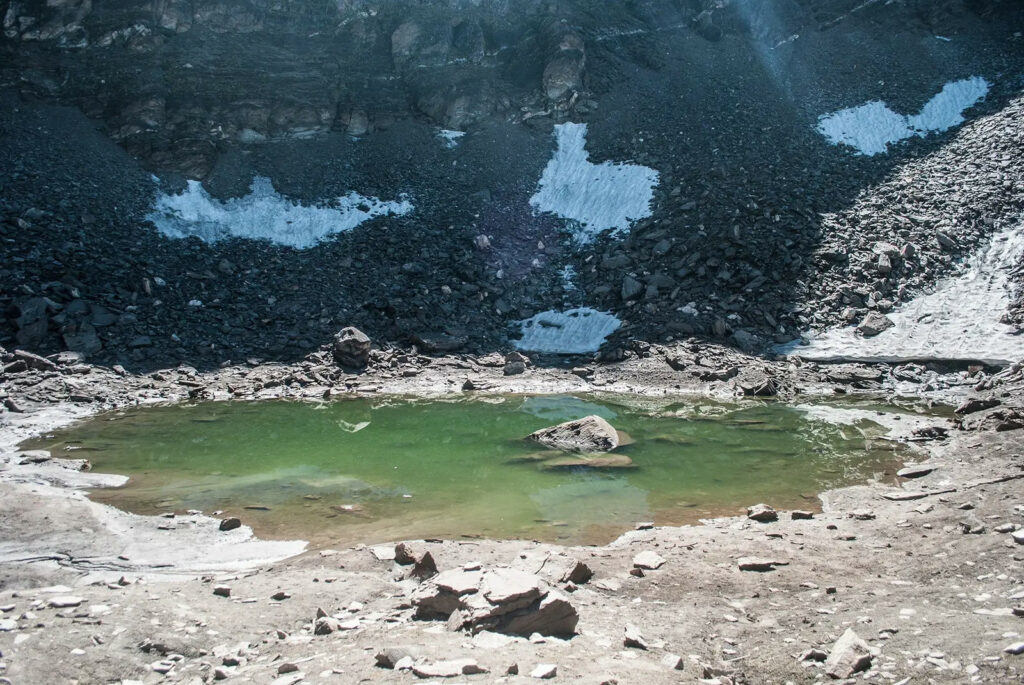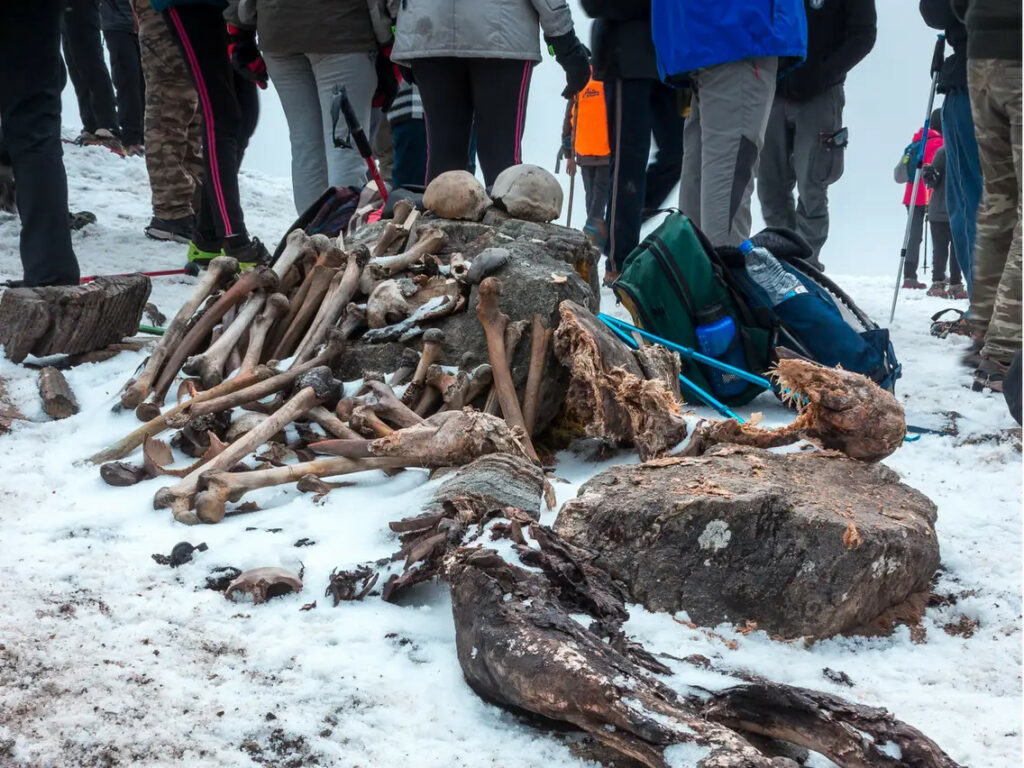A Chilling Discovery in the Himalayas
High in the Himalayas, at an elevation of over 5,000 meters, lies a seemingly picturesque glacial lake that harbors a dark secret. Known as Roopkund Lake, or more eerily as “Skeleton Lake,” this remote body of water reveals a macabre sight each summer when the ice melts: hundreds of human skeletons scattered across its shallow bed.

The Ghastly Revelation

In 1942, the world was stunned by the discovery of over 200 human skeletons at Roopkund Lake. As subsequent investigations unfolded, the true extent of this ancient tragedy came to light – more than 800 human remains were found preserved in the icy waters. The remote and inhospitable location of the lake only deepened the mystery surrounding these skeletal remains.
Theories and Speculations
For decades, the origin of these skeletons remained a subject of intense speculation. Theories ranged from the remains of Japanese soldiers from World War II to victims of an epidemic or a mass ritual suicide. Local legends even spoke of a king’s entourage punished by an angry goddess for their sacrilegious revelry in the sacred mountains.

Unraveling the Mystery
Scientific Breakthrough

It wasn’t until the early 2000s that modern science began to shed light on this ancient enigma. In 2003, a collaborative effort between Indian, German, and American researchers initiated a comprehensive study of the site. DNA analysis and radiocarbon dating provided crucial clues to the identity and fate of these long-lost individuals.
The Pilgrims’ Tragic Journey

The research revealed that the skeletons belonged to two distinct groups of Indian pilgrims who lived around 850 AD. One group consisted of shorter individuals, possibly local guides, while the other comprised taller people from a distant region. Intriguingly, some individuals shared unique genetic traits found only in a specific area of Maharashtra, central southern India.
Nature’s Deadly Assault

The final piece of the puzzle came from examining the skulls. All victims showed similar fatal injuries to the back of the head, consistent with blows from round objects. Scientists concluded that these pilgrims met their demise in a sudden and violent hailstorm. Massive hailstones, possibly traveling at speeds over 160 km/h, struck the group, leaving them no chance for escape in the barren landscape.
A Testament to Nature’s Power

The Roopkund mystery serves as a chilling reminder of nature’s unpredictable and sometimes deadly power. The lake’s extreme altitude and frigid temperatures preserved these remains for over a millennium, creating a time capsule of this ancient tragedy.

Today, Roopkund Lake continues to captivate researchers and adventurers alike. Its fleeting appearance – visible only when the ice melts each year – adds to its allure, drawing those eager to witness this unique and haunting testament to human vulnerability in the face of nature’s might.

